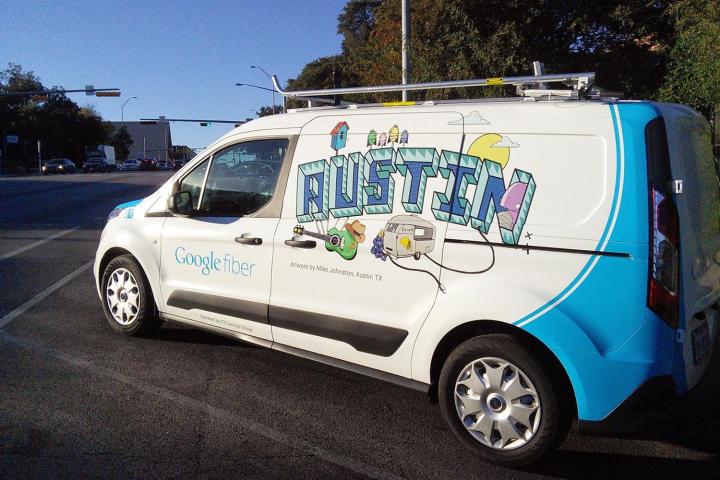
Before you get too jealous, though, consider that Google’s revolutionary new services come with a rather big catch: If you’re an Austin denizen gunning for Google Fiber in your neighborhood, then you have to convince your neighbors they want it too. Not enough interest in your part of town? Then you may be slap out of luck.
“We don’t choose which areas get Fiber — you and your neighbors do.”
“We don’t choose which areas get Fiber — you and your neighbors do,” writes Google’s Mark Farma. Those who want Fiber will have to sign up for one of three Fiber plans, and rally enough Fiber fans around them to meet Google’s deadline so the company can lay down the cable in an “all-out installation blitz,” and move on. “After we’re finished in your fiberhood, we’ll move on to the next,” Farma claims. The build out will begin in the South and Southeast areas of Austin, and will expand from there.
See how that works? Google doesn’t sell its wondrous new service; you do. No pamphlets or junk mail, just communities rallying the troops to ensure Google won’t leave their would-be fiberhood high and dry. The payoff is a chance at some very enticing rate plans, with something for every kind of Internet user.
Those who don’t need much speed can go with Google’s basic Fiber plan, which offers 5 Mbps Internet for a one time construction fee of $300, or $25/month spaced over 12 months. But where’s the fun in that? For $70/month, Google ups the ante considerably, offering near-instant connections of 1 Gbps (or 1,000 Mbps) for both download and uploading, as well as a full TB of cloud storage, and a waived $300 construction fee on a 12-month commitment.
Finally, there’s the big boy, AKA the Comcast-is-for-suckers bundle, which includes 1 Gbps Internet, 1 TB of cloud storage, and a 150+ channel bundle, with the ability to record up to 8 shows at a time. Again, a 12-month commitment is required for this package, and the $300 construction fee is waived. For those who want to learn more about the service, Google is opening a Fiber Space in downtown Austin for residents to come check Fiber out first hand. And Digital Trends will be there to check it out.
If you’re thinking Austin’s got it pretty good when it comes to connectivity, you’d be right … and it gets worse. The city is already home to AT&T’s Gigapower fiber service, which offers similar speeds and pricing, though without the TB of cloud storage at present. It should be interesting to see what happens as the two companies duke it out. Meanwhile, the rest of the country can only look on in envy.
Google believes faster Internet can “lead to jobs, drive economic growth, and help businesses succeed on the web.”
Of course, some may be wondering exactly what that lightning-quick connection speed can accomplish given the constraints of today’s Internet. After all, while there’s certainly a benefit of having top notch connection speeds, 1 Gbps for email and Netflix streaming is a bit like teleporting up a flight of stairs — convenient, perhaps, but a little overkill. However, as Google stresses, Fiber isn’t really about what’s happening now, it’s about what’s coming.
To tease what’s coming in the near future, Google is quick to outline the awful and simplistic world of the Internet past: dial-up. Comparing all that is possible today, from online gaming to video chatting and instant downloads, we’ve come a long way. As Google puts it, the vision of Fiber is to “lead to the next chapter of the Internet.” Apart from the better experience, Google believes faster Internet can “lead to jobs, drive economic growth, and help businesses succeed on the web.”
Apart from its initial Fiber Space exhibition, Google will be giving us a demonstration of its vision of the next chapter, as well as showing off its new devices for TV and Internet that will premiere in homes soon in Austin, and hopefully, far beyond in the coming years. Stay tuned Wednesday for a hands on look at the Internet devices of tomorrow.


